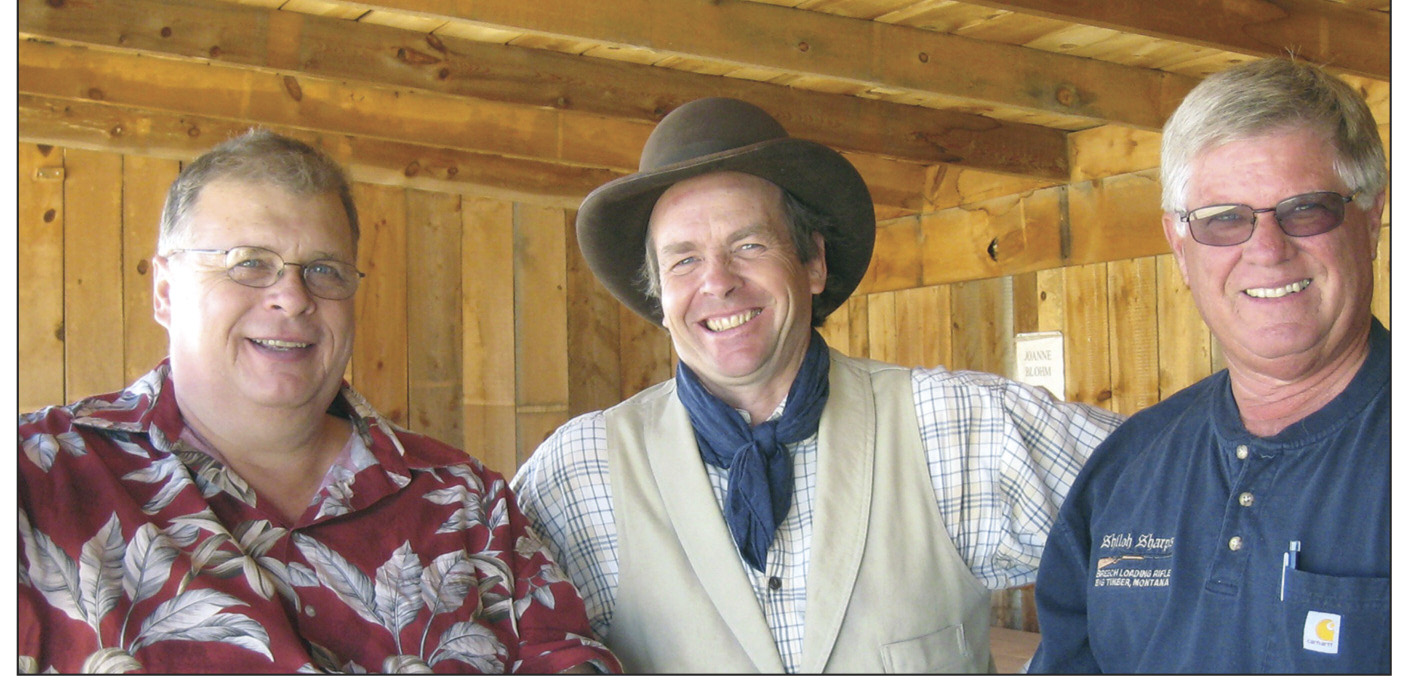Anyone who has fired even a single shot powered by black powder realizes fouling can be a significant problem. A significant

Many, if not most, BPCR Silhouette competitors use a "blow tube" to keep black-powder fouling soft just ahead of the rifle's chamber during a string of shots.
portion of black powder does not burn upon ignition, and unless controlled in some manner, it accumulates as black, hard fouling in the bore. That plays havoc with a bullet’s flight.
Upon becoming a Sharps Model 1874 shooter (fanatic?), it only seemed natural to try black powder in those big rifle cartridges originally designed for it. Blackpowder fouling was hardly given a thought, but I should have been prepared for what followed. Usually the first shot from a clean barrel hit relatively close to where aimed. The second one was just as apt to hit the ground in front of the target. Afterward, running a tight patch down the rifle’s barrel was difficult; it had fouled to that extreme.
Little by little, hints to the solution seeped into my brain. One bit of evidence was the size of lube grooves on vintage-style bullets. They were huge compared to grooves on more modern designs. Eventually I realized lube on modern cast bullets was there to prevent lead fouling, but on older designs, lube was meant to both help with lead fouling and with black-powder fouling. A correlation was the realization that modern bullet lubes did not mix with black-powder fouling. I tried smearing Crisco on some bullets for a Sharps .50-90 and .45-100. Some decent three-shot groups began happening without swabbing after every shot, but the slightest heat or direct sunlight would send it flowing into the powder. Mostly in frustration, I shot smokeless powders in the Sharps.

SPG Bullet Lubricant was developed specifically for black powder cartridge shooting.
About that time, two significant factors entered the picture. One was the NRA’s inaugural match for an envisioned new shooting game called Black Powder Cartridge Rifle Silhouette. It sounded like fun, but its originators wisely decided to adhere strictly with the name: meaning only black powder could be used. Duplex loading with a booster charge of smokeless powder was prohibited. I say “wisely,” for without that rule, all us BPCR Silhouette shooters would never have been inspired to work so hard to discover just how well that smelly, old black powder could actually perform.
The second factor was Steven Paul Garbe. We were well acquainted through mutual friends, and Steve heard about my plight in trying to get a bullet powered by black powder to follow the same path as the one fired before it. He dropped by my house with a small glass jar of yellow “stuff” and said, “Smear this on some bullets. Don’t swab the barrel between shots.” It worked!
I could actually shoot groups that in those days I considered exceptional. After firing a string of rounds, a finger run across the
rifle’s muzzle would have black grease on it. The bullet lube was mixing with the fouling, keeping it soft the full length of the Sharps’ 30-inch barrel.
Literature from the Sharps Rifle Company in the 1870s recommended using a bullet lube of equal parts Japan Wax and sperm oil, neither of which ingredient is now commonly available. (I had never even heard of “Japan Wax.”) Evidently, Steve had found modern replacements for such things.
At the second NRA BPCR experimental match, I only swabbed my rifle’s barrel after every relay instead of every shot. Although far from the winner’s circle, other competitors noted my procedure and asked, “How can you do that?” I told them about Steve’s bullet lube, and they said, “He should sell it. We would buy it.” SPG Black Powder Bullet Lubricant became commercially available that fall.

Mike visiting with Steve Garbe (center) and their mutual friend from Texas Bob Glodt, during a recent national championship at Raton, New Mexico.
Even more inspiring, in 1987 I dragged Steve to the first official NRA BPCR Silhouette National Championship. He tied for first place (losing in a shoot-off), but what was noticeable was he didn’t need to swab his barrel after every shot, like most competitors were doing.

During his early days of BPCR shooting, Mike never thought groups such as this could happen at 300 yards. The high shot was the first one through a clean, cold barrel.
Some BPCR shooters today swab after every shot, especially those competing in very hot, dry climates, like Arizona in summer. Others firing paper-patched bullets do also. Most of the shooters in less harsh climates use a “blow tube” to keep fouling soft just ahead of the chamber. For competition, most of us have bullets seated out in the case so as to be close or into the rifling. Loads with deeper seated bullets for hunting don’t require “blow tubing” for chambering.
There are many black-powder bullet lubes on the market today, and there have been untold refinements in getting black-powder cartridges to perform to levels considered impossible 30 years ago. Some BPCR Silhouette competitors don’t swab their barrels during an entire match comprising 60 or sometimes 80 shots, counting sighters. Most of us won’t use a rifle and handload combination unless it delivers precision in terms of 1.5 MOA or better. Things have come a long way.





